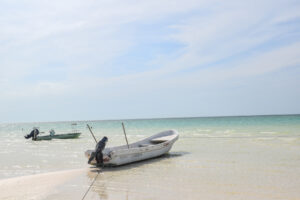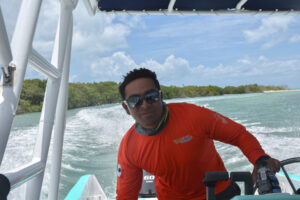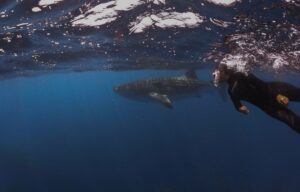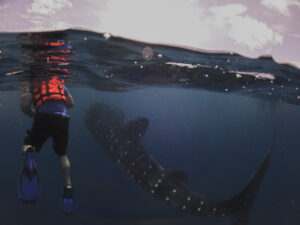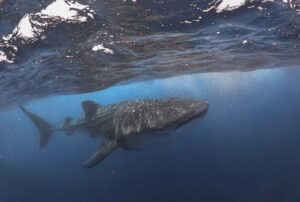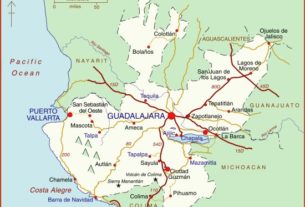Each year, the Mexican state of Quintana Roo is swarmed by foreign tourists. Even in 2020, in the midst of the global COVID-19 pandemic, the city of Cancún alone saw upwards of two million tourists. Being that the region was one of the few permitting entry to foreigners, I decided to make the journey from the United States to the Yucatán Peninsula; though it wasn’t ritzy resorts and club-going that had enticed me into visiting.
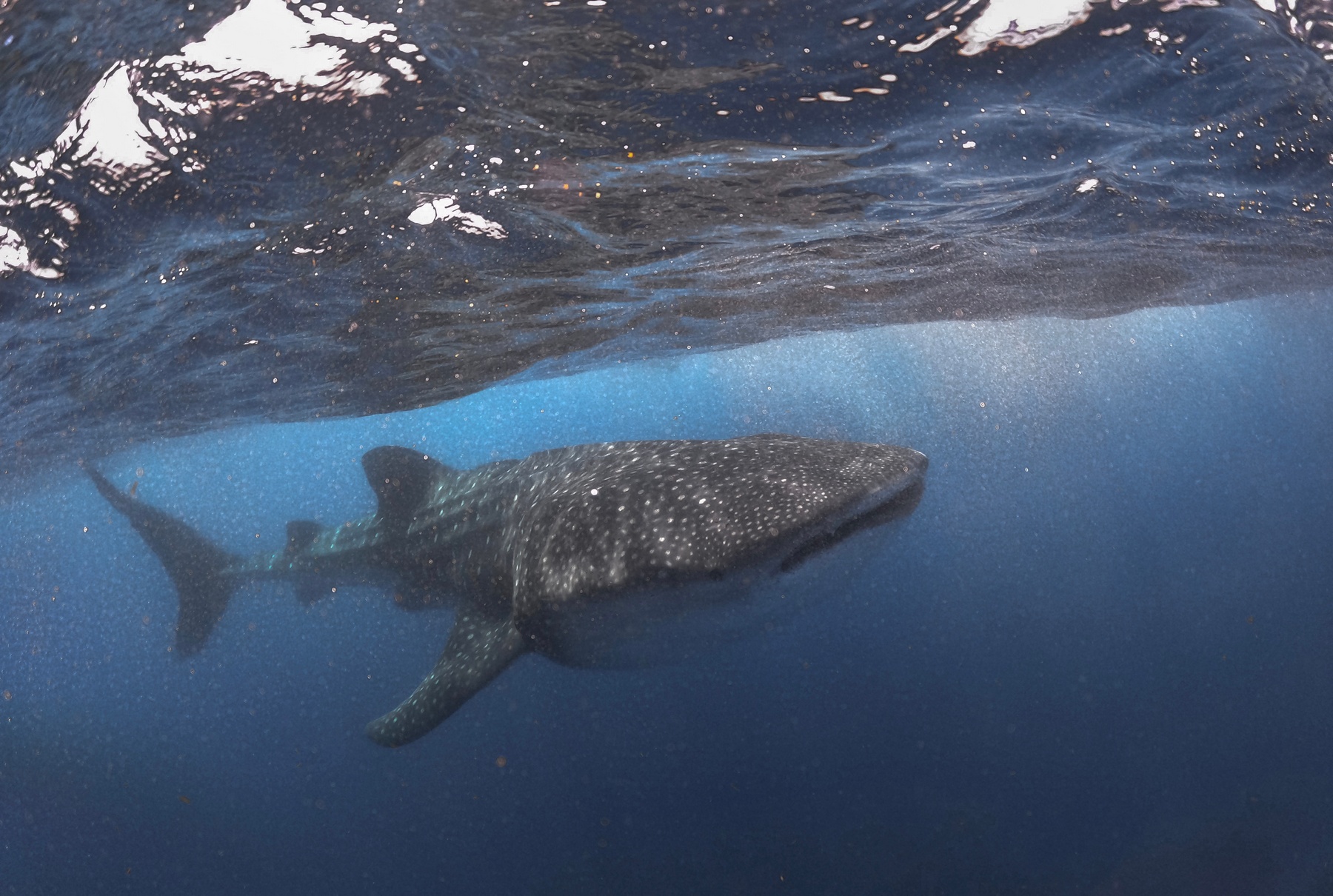
It was, instead, the world’s largest fish, the mighty whale shark, whose massive annual aggregations in the waters between the Caribbean Sea and the Gulf of Mexico rival the presence there of tourists during the summer months. These gentle giants aggregate off the shores of the Yucatán Peninsula to feed on the plankton-rich waters from mid-May to late September. Since whale sharks are filter feeders, the abundance of plankton nearby Cancún, Isla Holbox and Isla Mujeres make them prime locations for not just sightings but encounters with these massive fish.
My objective was to both encounter one of these remarkable polka-dotted creatures while also gaining a better understanding of how ecotourism in the area is affecting, both positively and negatively, this endangered marine species.
For years, whale sharks, sometimes targeted by these coastal communities as a food source, and fishermen have clashed in the region.
“Isla Mujeres was a fishing island. The only thing you saw routinely (before the advent of whale shark ecotourism) at every place close to the water was dead animals,” said Jim Abernethy, a shark conservationist and tour operator.
In recent history, however, locals in places like Isla Mujeres and Isla Holbox have come to depend on whale sharks. These giant fish are now a central part to not just these islands’ economies, but their cultures as well. Eventually, the economic interest to be found in fishing began to shift. A whale shark alive was potentially worth more than it was dead.
“Unfortunately, very sadly, for the human race, there has to be an economic interest. It’s a reality we need to accept and rather than push against it, we need to work with it,” said Jonathan R. Green, a biologist and founder of the Galapagos Whale Shark Project.
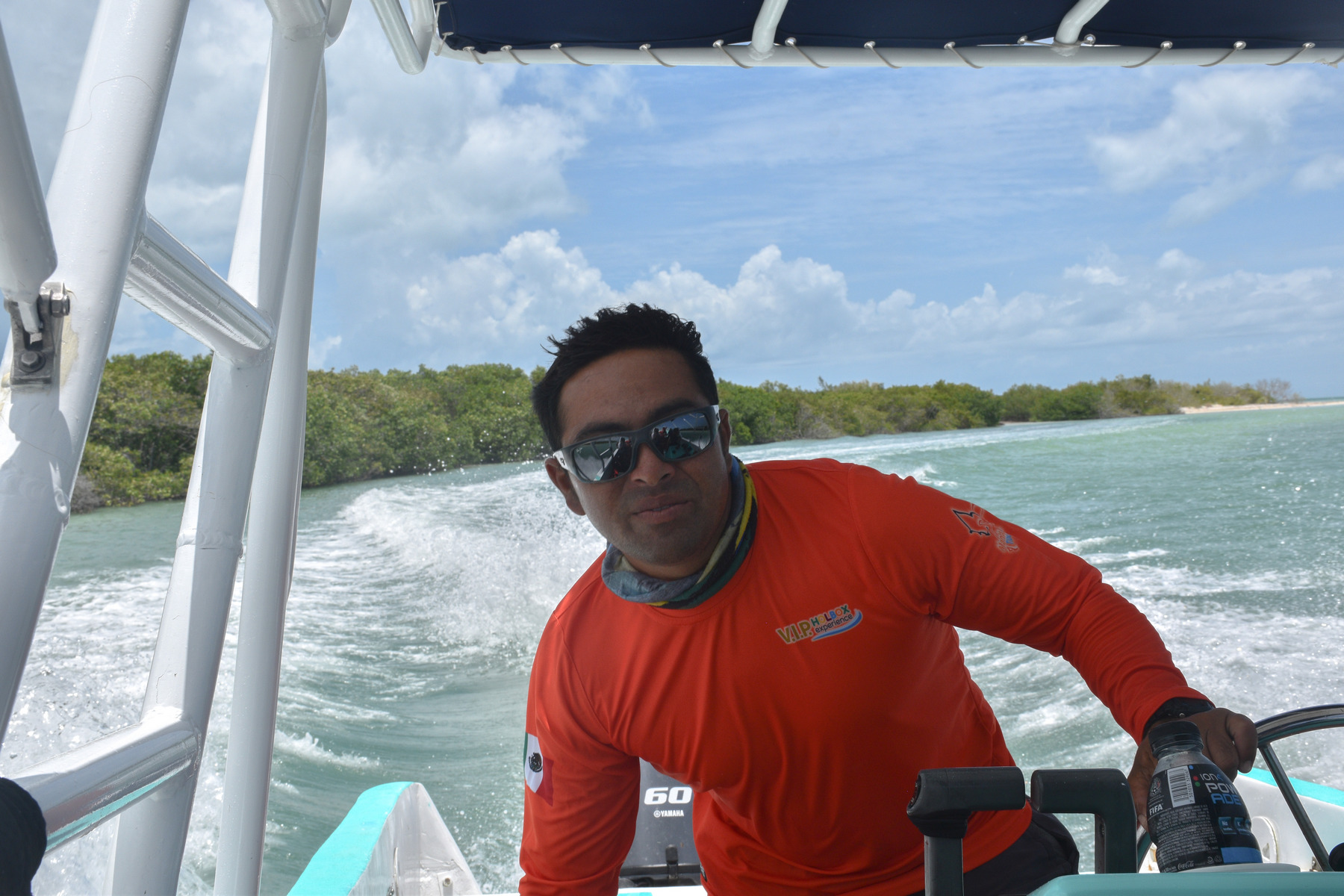
Fascinated by what seemed to be, from afar, a conservation success story in the making, I arranged a boat trip from Isla Holbox, a sandy speck on the map just north of Cancún, to try my luck and see if I could spot a shark. The tour operator, V.I.P. Holbox, gave myself and other snorkelers a briefing early on the morning of our trip. They emphasized that, under no circumstances, were we allowed to touch the whale shark. It was absolutely imperative, they said, that we maintain our distance. We were then offered a biodegradable sunscreen, free of charge, that wouldn’t bother the sharks once we were in the water.
The journey itself was long and arduous. We skidded across choppy waters for over three hours. Eventually, however, we saw on the blue horizon at least a dozen small vessels bobbing atop the water. Those boats were other ecotourism operators, who had ferried paying-tourists out to do exactly what I was there to do. We readied our fins and masks. Only two of us, accompanied by our guide, were allowed to enter the water alongside the sharks at a time. We each got two dives, though I managed to get a third, as it was my birthday!
Being so out of one’s element like that, beside such a magnificent and gigantic creature, was a humbling moment. Thanks to this kind of tourism, whale sharks have become a valuable source of income for locals.
“The change that I watched yearly in Mexico because of the whale shark booming industry was incredible. It went from people angry and upset with each other because they were all starving and broke and in garbage boats, to beautiful boats and happy people, everybody getting along, peacefulness and a thriving, extremely happy community. It’s such a perfect example of exactly what we need more of in the world,” Abernethy said.
When these massive summer aggregations of whale sharks were first discovered, the now highly lucrative tourism industry that offers travelers the chance to not only observe but swim with the fish soon developed. Although the advent of this new form of travel in the region is fairly new, it has reaped measurable effects on both the creature and the communities.
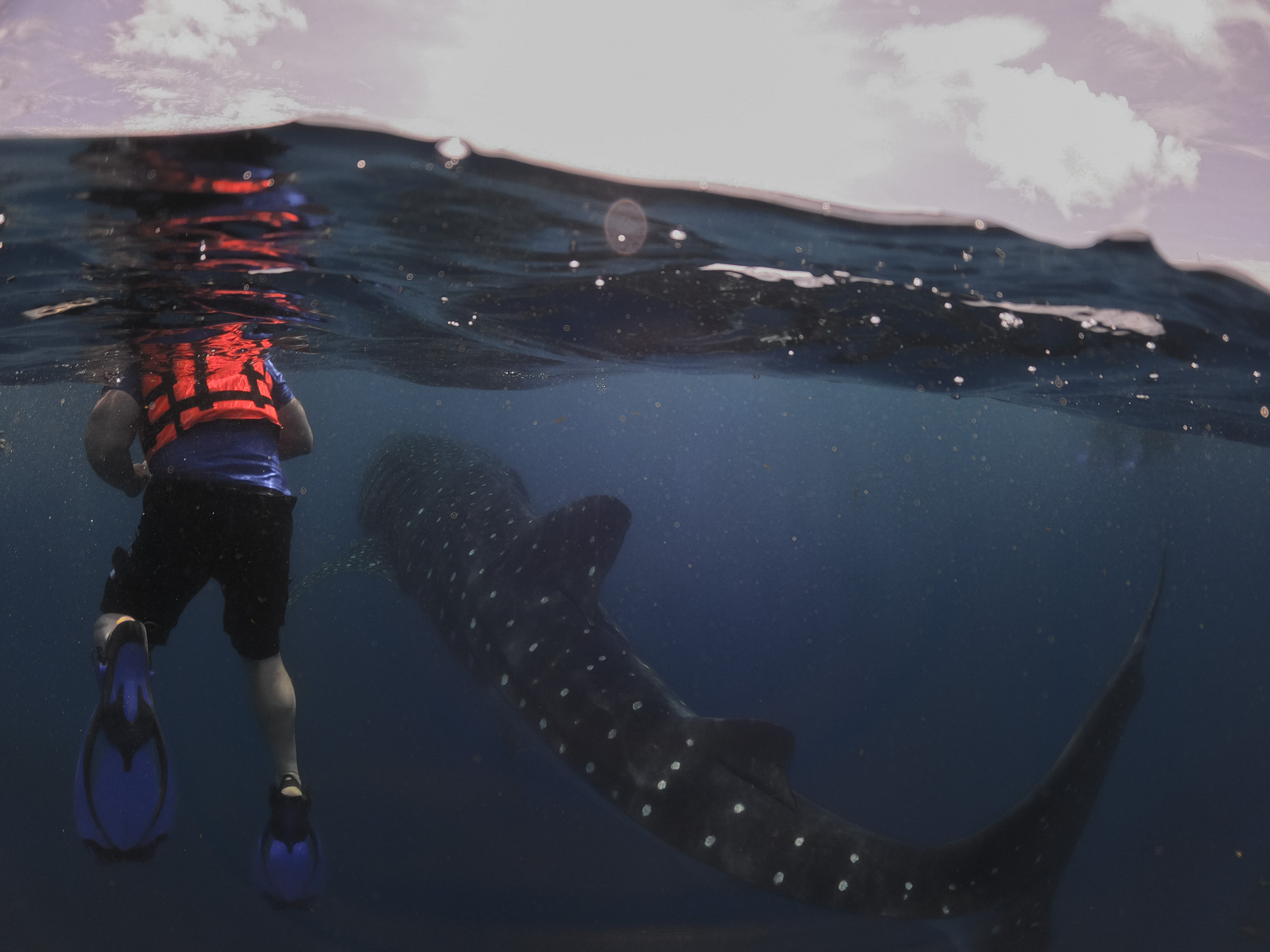
“The whale shark (tourism) industry started just twenty years ago. Before that, few people knew what a whale shark was or where to find them,” says Guillermo Torfer, who runs V.I.P. Holbox. Since then, the chance of swimming alongside the world’s largest shark has become a popular addition to many tourists’ Mexico trip itineraries.
With its increasing popularity, the Mexican government has had to impose rigid regulations, a move that has been met with praise by many conservationists, as they claim it will ensure the sustainability of the whale shark tourism industry. Considered by many as the real victory of whale shark tourism in Mexico is not the role of the government but instead the way it involves locals in conservation efforts.
“The fishermen now love (whale sharks) because they’re taking out snorkelers and divers, the very same coastal communities that once hunted the whale sharks are now profiting off of them in a very positive way, so they have a very deep invested interest in protecting them,” said Jonathan R. Green.
There are obviously a myriad of potential harmful impacts that unregulated, unsustainable tourism related to whale sharks could have on the species. One of the most common would be lacerations induced by the propellers on the back of boats, even tourist boats. Still, the consensus concerning whale shark tourism in Mexico is that it is doing more good then it is harm, so long as it remains sustainable.
The best news for whale sharks is that they no longer have a target on their backs from locals.
“The captains of the boats used to be fishermen, but now they are employed as the captains of boats to take tourists to go and see whale sharks. It creates an alternative economy for the fishermen and involves conservation,” said Deni Ramírez Macías, a marine biologist and founder of Tiburón Ballena Mexico.
Another observed benefit of the relatively new industry is the fiscal benefits. Whale shark tourism has proven, for the people of Isla Holbox and Isla Mujeres, to be a far more lucrative undertaking than fishing.
“Since whale shark ecotourism was introduced to Isla Mujeres, it’s become a thriving ecotourism town, which is so great, because that’s what we need for the future,” said Jim Abernethy.
The future of the whale shark is that their habitats are still uncertain, and ecotourism is by no means the solution to the far greater threats that still loom. It could, however, be a key in protecting the species. While there are still a great many issues facing the world’s largest fish, sustainable ecotourism might bring more people into the fight for the conservation of the animal.
As Deni Ramirez told me,“When (locals) start to feel that they depend on the animal, that their economy, their family depends on the animal, they’ll have the realization that I should protect, I should care, I should do something.”
See also on MexConnect:
- Swim with whale sharks on Isla Mujeres
- Swimming with whale sharks in Cancún
- Nature’s artist: Mexico’s Alan Vazquez
Published or Updated on: November 16, 2021

